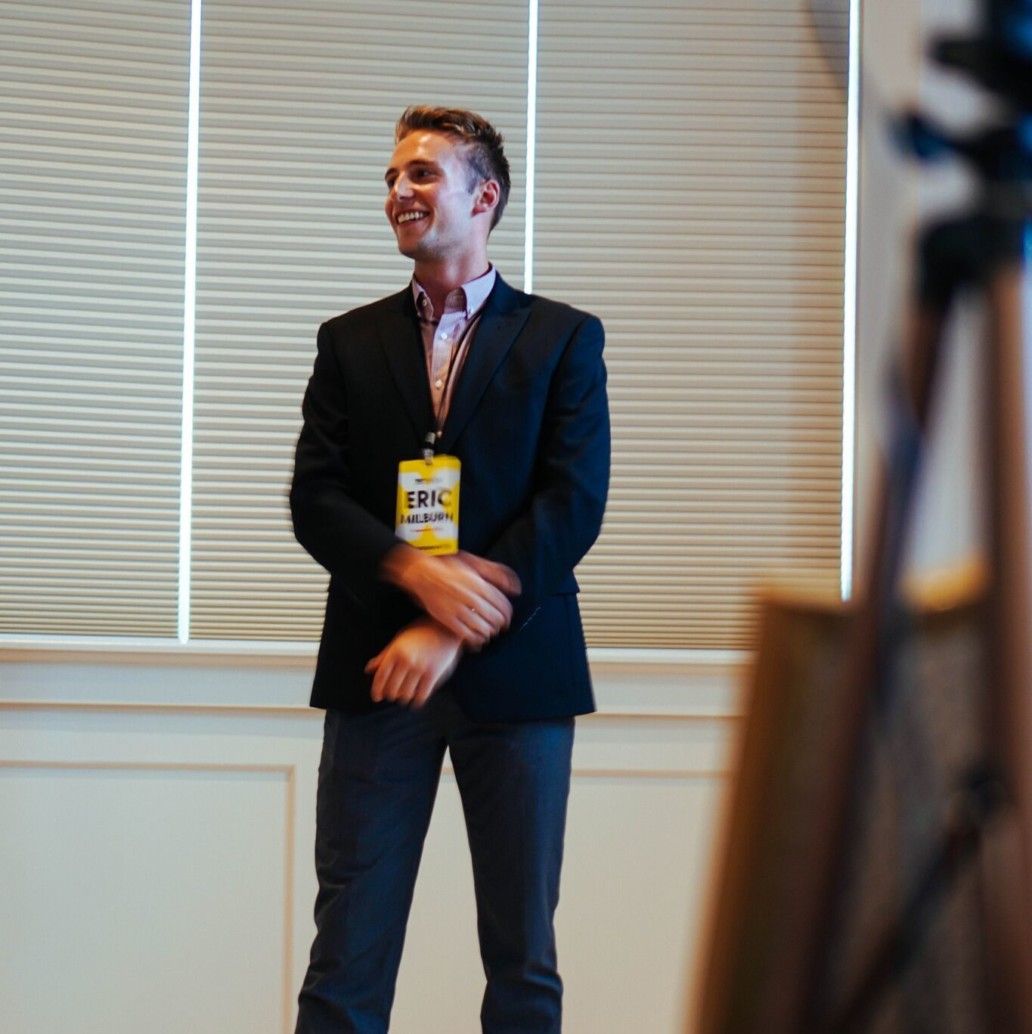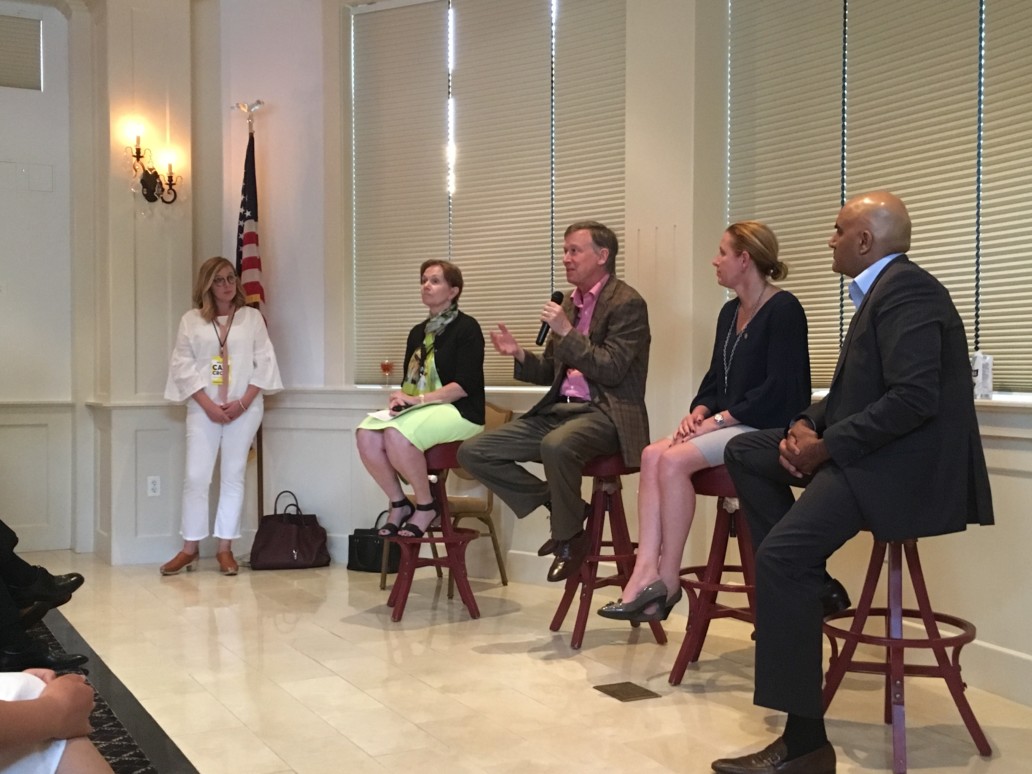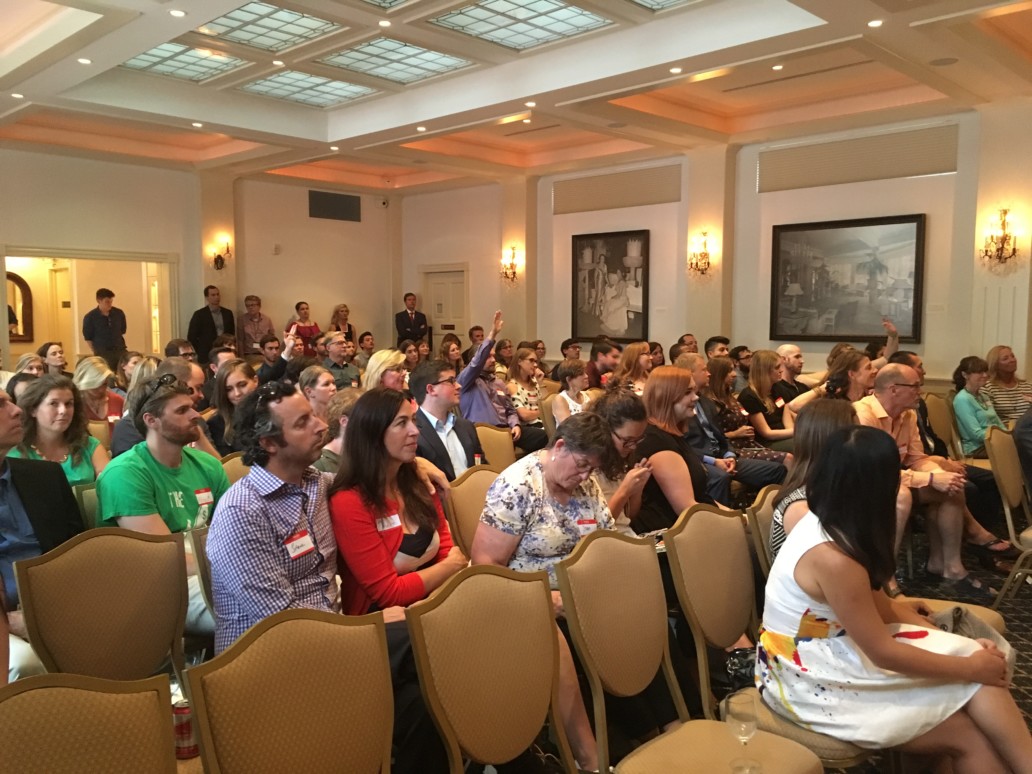You’re probably no stranger to TED talks, in which case you may have noticed that the air was saturated with inspiration last week at TEDxMileHigh: Point of Departure. Our flagship event focused on mobilizing the community, defeating complacency, and transforming curiosities into actuality. Whether you’re new to TEDxMileHigh, or a devoted TEDx’er, you couldn’t escape the fever of enthusiasm.
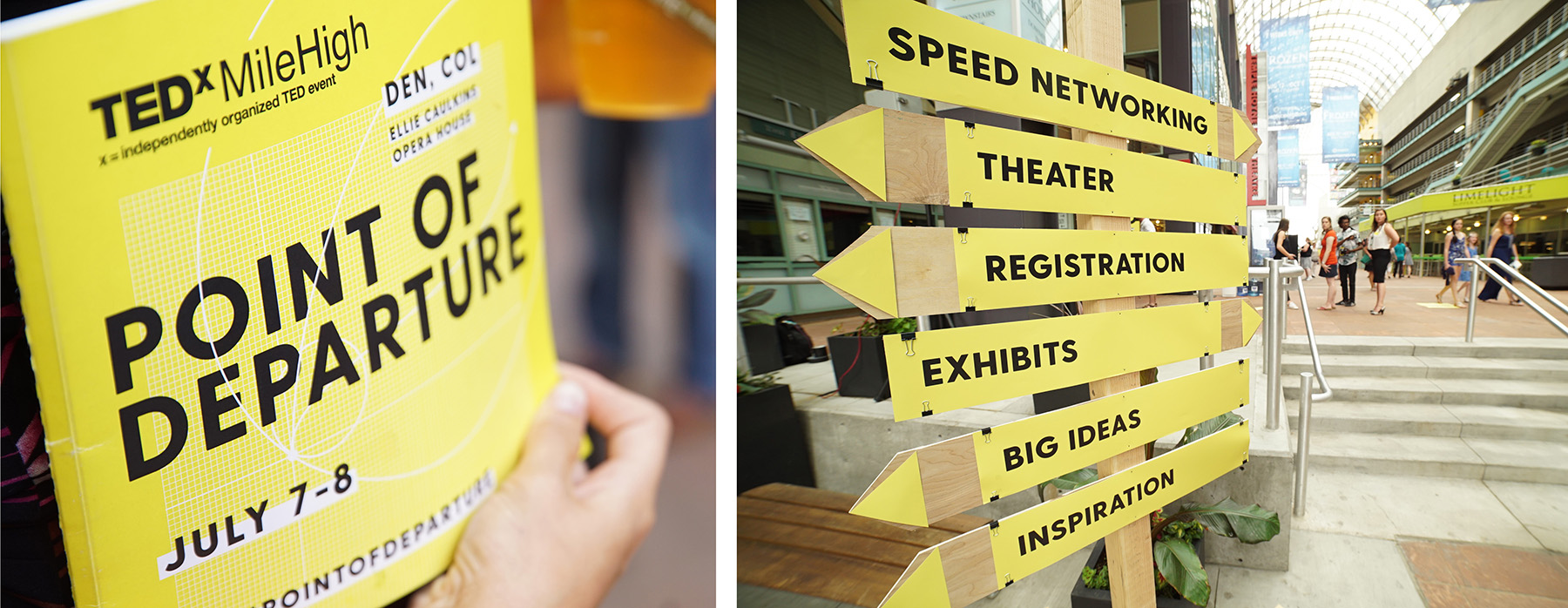
The stage at Point of Departure was the nucleic catalyst of inspiration. The audience was captivated by 22 extraordinary Coloradan speakers and performers. From audacious dreams of supersonic flight and poetic performances expressing vulnerable emotion to speakers who suggested disrupting linear time and others who encouraged practicing intellectual humility, we were inspired to change how we see the world. Every speaker shared an enlightening experience of their point of departure, filling up the Ellie with one part intellect and one part passion. Whether you whole-heatedly agreed or had reservations, the talks sparked stimulating conversations that echoed throughout the weekend. Stayed tuned on social media as each of these inspiring talks are posted in their entirety in the coming weeks: Facebook, Instagram, and Twitter.
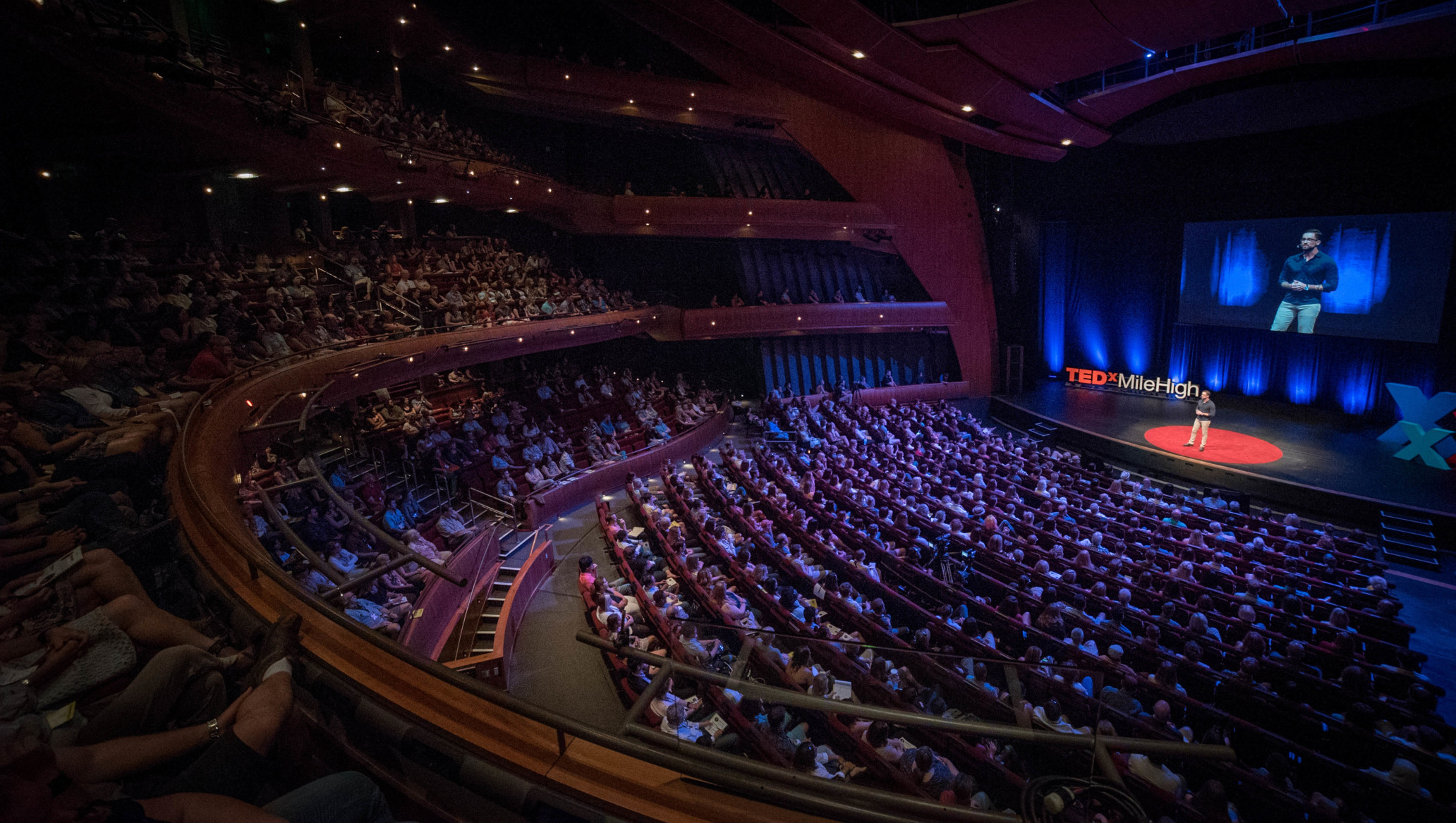
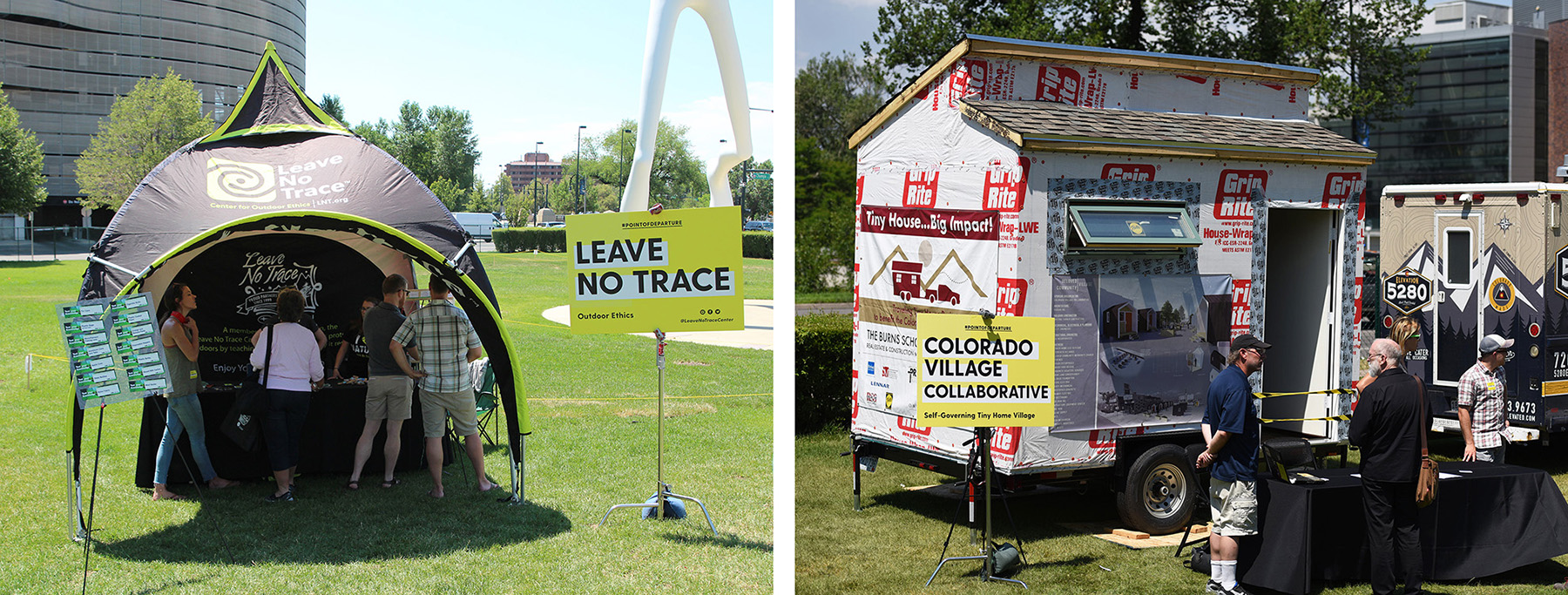
The mood of Point of Departure carried on beyond the stage into the Ellie Caulkins Lobby, the Galleria, and the Sculpture Park. Inside, a fresh technology startup, Specdrums, invited attendees to interact with their new product – a brilliant, colorful setup to play music at your fingertips. Social Venture Partners and The Denver Foundation were back, challenging us to unleash our passion with a purpose, and HealthONE gave us a taste of virtual reality health with the ShareCare app. Speaker Arielle Hein’s GIF Photobooth was a hit as real-time animated images of attendees captured the amusement and humor of the moment. Check out the photobooth and download your GIF at snaps.fun.
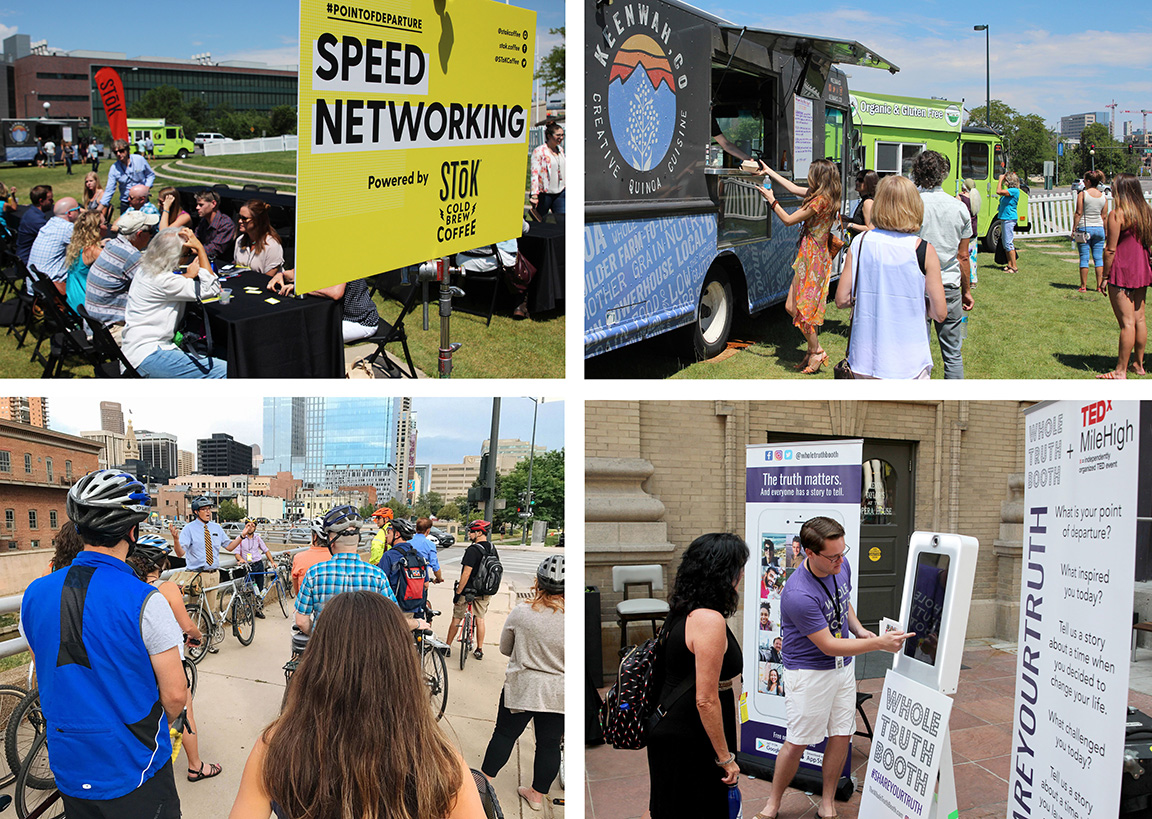
Despite the threatening clouds, TEDx’ers could choose to spend part of the day outside, whether it was joining the biking adventure around town with David Pulispher, Denver’s Bike and Pedestrian Planner, or telling their story to connect with others at the Whole Foods booth or at the Whole Truth Booth. SToK Cold Brew Coffee offered attendees a magnetizing experience in speed networking with one another. Food trucks lined the perimeter of the park, presenting a moment to enjoy a complimentary meal, and refreshments from Teatulia, Guayaki, and Teakoe also welcomed observers to explore their efforts to offer sustainable products.
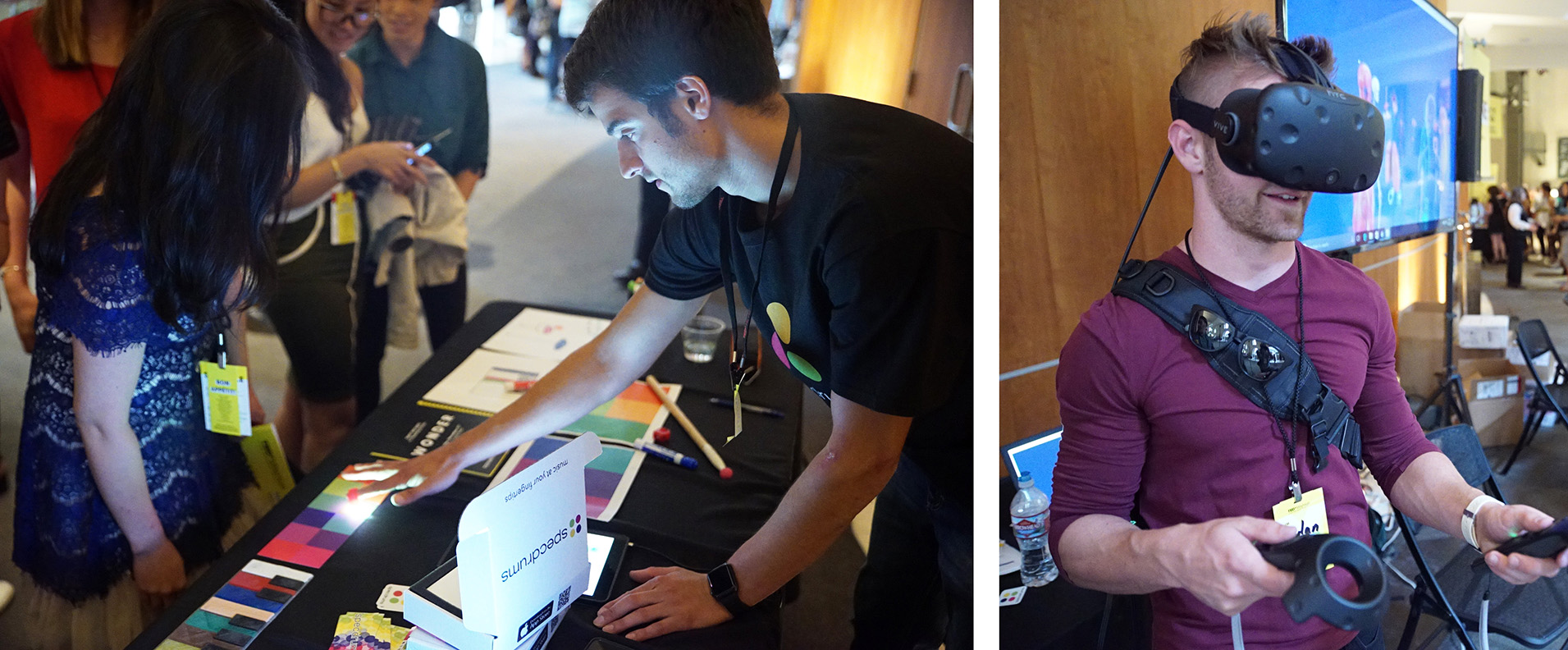
TEDxMileHigh’s Sustainability Village spurred conversation on environmental ethics with dozens of businesses demonstrating their efforts in building sustainable practices in our community. Colorado Village Collaborative offered a glimpse into a tiny home village, Meier Skis demonstrated that it is possible to build high-tech handmade skis from beetle-kill pinewood, and GreenSky Mobile Solar showed us the future of portable sustainable power. We hope you also noticed that EcoProducts, Leave No Trace, CU Boulder Recycling, and even Planet Bluegrass all called attention toward building more sustainable, conscientious operations of disposing trash and recycling. These businesses help us get one step closer to keeping the world a cleaner place.

The momentum continued beyond the theater Friday and Saturday evenings as attendees, speakers, and exhibitors alike took their fresh ideas, thoughts, and curiosity with them to the after-parties. The energy was contagious as the TEDxMileHigh community continued discussing big ideas including bi-partisan friendship, preventing teen suicide, affordable housing, and the next solar eclipse!
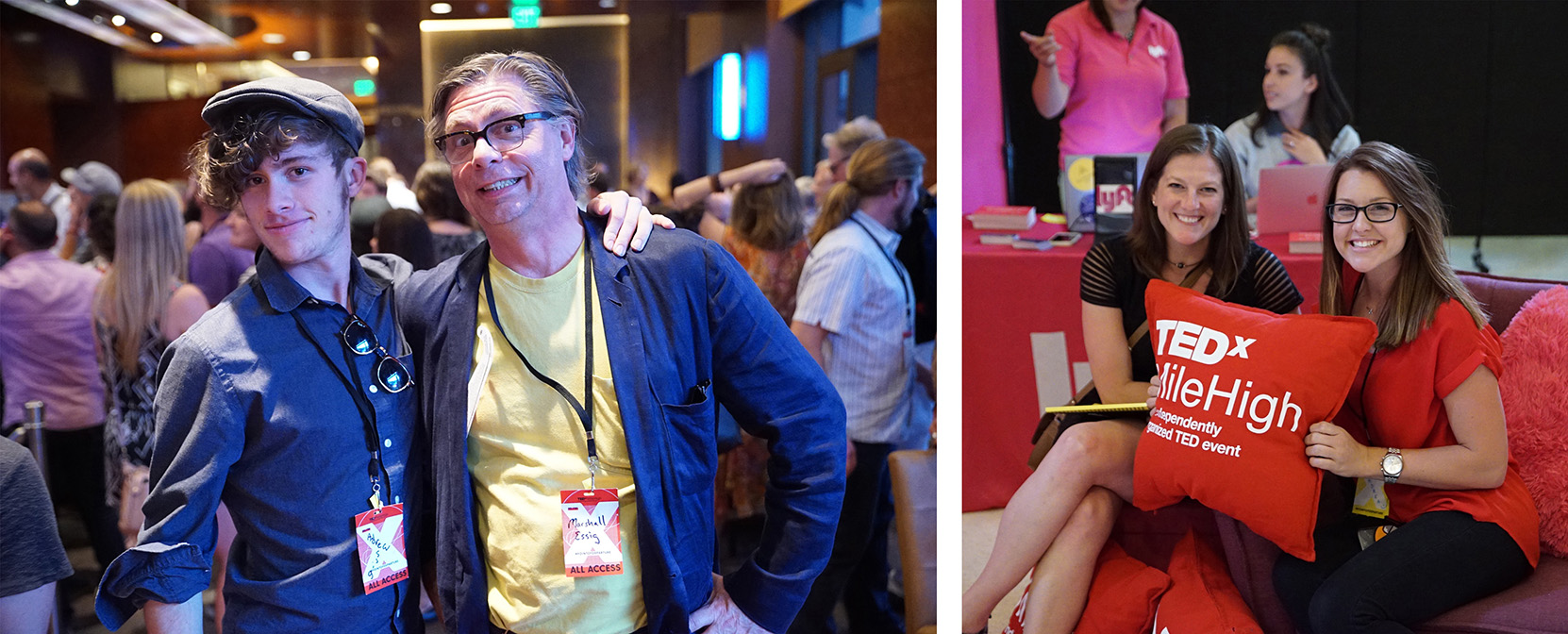
TEDxMileHigh: Point of Departure may have ended, but we hope that the inspiration and ambition is only the beginning! Thank you for joining us — we are incredibly fortunate to have a voracious, open-minded, and curious community and we couldn’t make the event a success without you. We look forward to connecting with you again as we plan for TEDxMileHigh: Wonder on November 11th. Save the date, and we’ll see you there!
